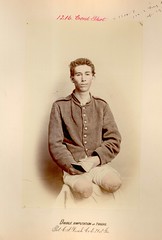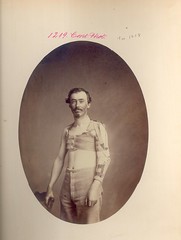TWE*RK
War Department,
Office of the Surgeon General,
Army Medical Museum and Library.
Washington
May 24, 1918.
Lieutenant Robert Ross,
C/o Col. Bispham, Officers Training Camp,
Fort Riley, Kansas.
My dear Bob:
I am in receipt of your letter of the 21st and am indeed sorry to learn that you missed the big crowd which you intended to take.
You certainly have gotten me in a fine hole with the “Battle of Cambrai”. No sooner had you left town than they were on the phone about this film and have been on the phone ever fifteen minutes since as it had been booked for the Metropolitan Opera House, Philadelphia to play before an audience of 7,000 people more or less, and we are all going to get into trouble before the show is given. Up until the present time the show has not been given.
Hurry up and get through with the picture you are on and get back here. Fifteen different jobs here need your attention. Pay rolls have already been forwarded for the men to sign.
Sincerely,
Tom Evans



















